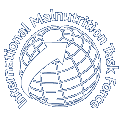Uptake of HIV testing and outcomes within a Community-based Therapeutic Care (CTC) programme to treat SAM
Bahwere P, Piwoz E, Joshua MC, Sadler K, Grobler-Tanner CH, Guerrero S, Collins S.
In Malawi and other high HIV prevalence countries, studies suggest that more than 30% of all severely malnourished children admitted to inpatient nutrition rehabilitation units are HIV-infected
BACKGROUND: In Malawi and other high HIV prevalence countries, studies suggest that more than 30% of all severely malnourished children admitted to inpatient nutrition rehabilitation units are HIV-infected. However, clinical algorithms designed to diagnose paediatric HIV are neither sensitive nor specific in severely malnourished children. The present study was conducted to assess : i) whether HIV testing can be integrated into Community-based Therapeutic Care (CTC); ii) to determine if CTC can improve the identification of HIV infected children; and iii) to assess the impact of CTC programmes on the rehabilitation of HIV-infected children with Severe Acute Malnutrition (SAM).
METHODS: This community-based cohort study was conducted in Dowa District, Central Malawi, a rural area 50 km from the capital, Lilongwe. Caregivers and children admitted in the Dowa CTC programme were prospectively (Prospective Cohort = PC) and retrospectively (Retrospective Cohort = RC) admitted into the study and offered HIV testing and counseling. Basic medical care and community nutrition rehabilitation was provided for children with SAM. The outcomes of interest were uptake of HIV testing, and recovery, relapse, and growth rates of HIV-positive and uninfected children in the CTC programme. Student’s t-test and analysis of variance were used to compare means and Kruskall Wallis tests were used to compare medians. Dichotomous variables were compared using Chi2 analyses and Fisher’s exact test. Stepwise logistic regression with backward elimination was used to identify predictors of HIV infection (alpha = 0.05).
RESULTS: 1273 and 735 children were enrolled in the RC and PC. For the RC, the average age (SD) at CTC admission was 30.0 (17.2) months. For the PC, the average age at admission was 26.5 (13.7) months. Overall uptake of HIV testing was 60.7% for parents and 94% for children. HIV prevalence in severely malnourished children was 3%, much lower than anticipated. 59% of HIV-positive and 83% of HIV-negative children achieved discharge Weight-For-Height (WFH) > or = 80% of the NCHS reference median (p = 0.003). Clinical algorithms for diagnosing HIV in SAM children had poor sensitivity and specificity.
CONCLUSION: CTC is a potentially valuable entry point for providing HIV testing and care in the community to HIV infected children with SAM.
Click this link for full article
